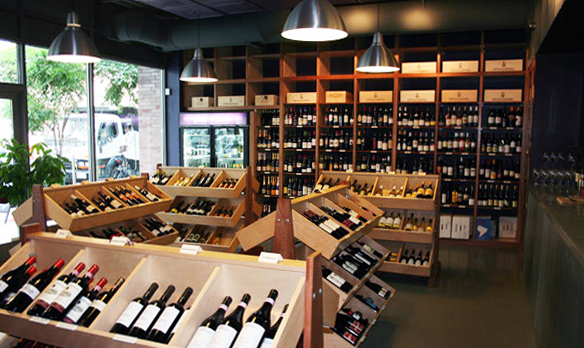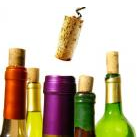
What is the ideal temperature to store or cellar wine?
The temperature often cited as ideal to cellar or store most wine is 55°F (13°C). The practical answer to this query was reached empirically by winemakers centuries before modern technology could scientifically confirm their prescriptions. Before the advent of electrical refrigeration, winemakers would cellar their bottled wine in underground caves. The average underground temperature in Burgundy, France, for example, is 13°C. This ideal temperature has merit beyond custom or regional appeal, which is evident in the fact that winemakers and collectors to this day store their wine in underground cellars set to the same temperature as their predecessors’.
The chemical reactions during bottle aging are myriad, occur simultaneously at varying rates and either increase or decrease depending on the temperature. The trick to properly aging wine is to keep the undesirable reactions (those that make a wine spoil faster or adversely affect taste or bouquet) to a minimum, while allowing the desirable reactions (those that gradually relax the tannins and help overall taste and alcohol integration) to occur at a preferable rate. It may seem reasonable for wineries to store their products in large refrigerators at just above freezing temperature instead of 55°F so that oxidation, the chemical force that inevitably spoils all wine, is slowed. However, the wine’s tannins, softening at a snail’s pace, may take longer than a human life span to unwind and achieve that self-actualized state of optimal “drinkability.” Last, it is important to note that as temperature increases, the rates of reactions are affected exponentially. Therefore, even minimal time at extreme heat (e.g., 90°F for several hours in your car’s trunk) can have serious detrimental effects on your wine. Hence, it is crucial to understand a wine’s provenance, as there are ample opportunities between vineyard and dining room table for heat damage to manifest.
What is the ideal temperature at which to serve wine?
The correct serving temperature for a wine is an entirely different story than storing it; there is no fixed serving temperature for reds, whites and rosés alike. If a particular wine is too warm it may taste boozy or flabby, and if it is too cold it may seem flavorless. Let’s break it down by type of wine into four strata of temperature: In general, for heavy reds such as Cabernet Sauvignon, 60–65°F is good; for medium- to light-bodied reds such as Pinot Noir, a cooler 55–60°F; a still cooler 50–55°F for full-bodied whites such as Chardonnay and very light fruity reds such as Beaujolais Nouveau; and 45–50°F for light whites such as Sauvignon Blanc, rosé and sweet or sparkling whites.
If you are like me, and the majority of wine drinkers out there, you don’t own a special wine chiller set to these precise temperatures nor do you take your wine’s temperature once you’ve opened a bottle. Here is some practical advice: Wine at room temperature is never a good thing, whether white or red. In general, it has been my observation that people serve whites too cold and reds too warm. If you need to chill a bottle that is at room temperature, ConsumerReports.org advises that it takes between 5 minutes (for the heavy reds at the top of the spectrum) and 20 minutes (for the light whites at the bottom of the spectrum) in the freezer to cool to their appropriate serving temperatures. If you have a bottle of white in the refrigerator that you plan on serving with dinner, take it out and let it stand at room temperature for at least 20 minutes before the meal is ready to be served.
“Who cares?” you may ask. Does a 10-degree difference in temperature really affect my wine enjoyment? Think of it like this: If your bottle of Burgundy were a filet of salmon or your Brunello di Montalcino were a porterhouse steak, 10 degrees would be the difference between delicious and completely ruined. A lot of work (hopefully) went into crafting that beverage; treat it with respect from cellar to table and you will be rewarded!
 Daniel Mensch is co-owner of Pier Wines. He encourages anyone who wants to learn about wine to stop by and visit with him in his shop.
Daniel Mensch is co-owner of Pier Wines. He encourages anyone who wants to learn about wine to stop by and visit with him in his shop.
Pier Wines
12 No. 5th Street between Kent Avenue and the East River